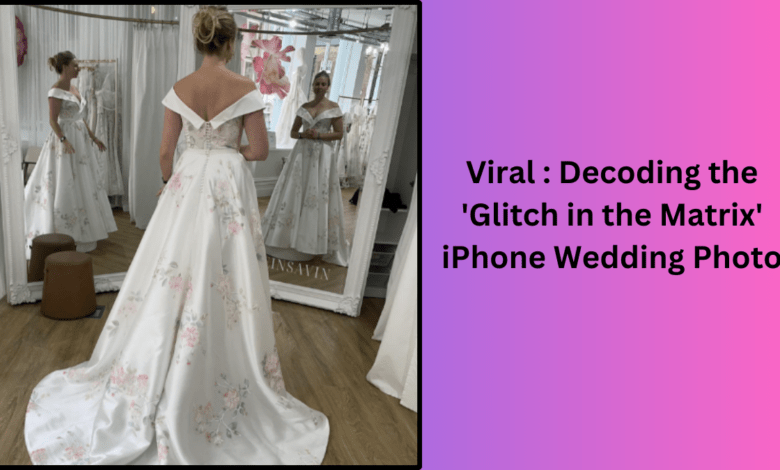Viral : Decoding the ‘Glitch in the Matrix’ iPhone Wedding Photo

Ever since the infamous ‘the Viral dress’ phenomenon that captivated the internet in 2015, optical illusions have continued to baffle and mesmerize. The latest enigma, the ‘glitch in the Matrix’ wedding dress iPhone photo, has stirred up conversations on Instagram, sparking debates about computational photography.
In this peculiar iPhone 12 photo shared by Tessa Coates on Instagram, she stands before two mirrors, donned in a wedding dress. At first glance, everything appears ordinary, but a closer look at the mirrors reveals the subject posing differently in each reflection.
View this post on Instagram
The description by Tessa Coates claims it’s a “real photo, not Photoshopped, not a pano, not a Live Photo.” This led to speculation that the iPhone’s computational photography processing, potentially lacking mirror detection, resulted in combining three distinct subjects in the scene, each with different poses, during multi-frame processing.
However, a flaw in this argument arises. Given the typical shutter speed of at least 1/100 sec for indoor daylight iPhone photos, coupled with Apple’s Deep Fusion processing, capturing nine images almost instantaneously, the drastic pose changes seem implausible within the photo’s capture timeframe.
Viral Iphone Photo Explanation
Delving deeper, respected YouTuber iPhonedo scrutinized the photo’s metadata, revealing its resolution as 3028 x 3948, inconsistent with the native iPhone 12 resolution (3024 x 4032). Moreover, the photo lacks the iPhone’s native 4:3 aspect ratio.
Despite Tessa Coates’ assertion that it isn’t a panorama, further investigation, as highlighted by iPhonedo, strongly suggests otherwise. The absence of the panorama symbol in the ‘info’ section could be misleading, as not completing a full sweep while in ‘pano’ mode still results in a smaller panoramic photo – unlabeled as such.
READ ALSO:- KISS has introduced a digital avatar in the “new era” and held a spectacular farewell show in New York
The conclusion is that the wedding dress photo likely emerged from unintentionally activating ‘pano’ mode, where panoramic photos stitch together multiple shots over a more extended period than multi-frame processing. This revelation offers a simpler explanation than the elaborate investigations that followed the viral blue-and-black dress in 2015. As a bonus, it introduces a new iPhone camera trick to explore during holidays or upcoming events.



